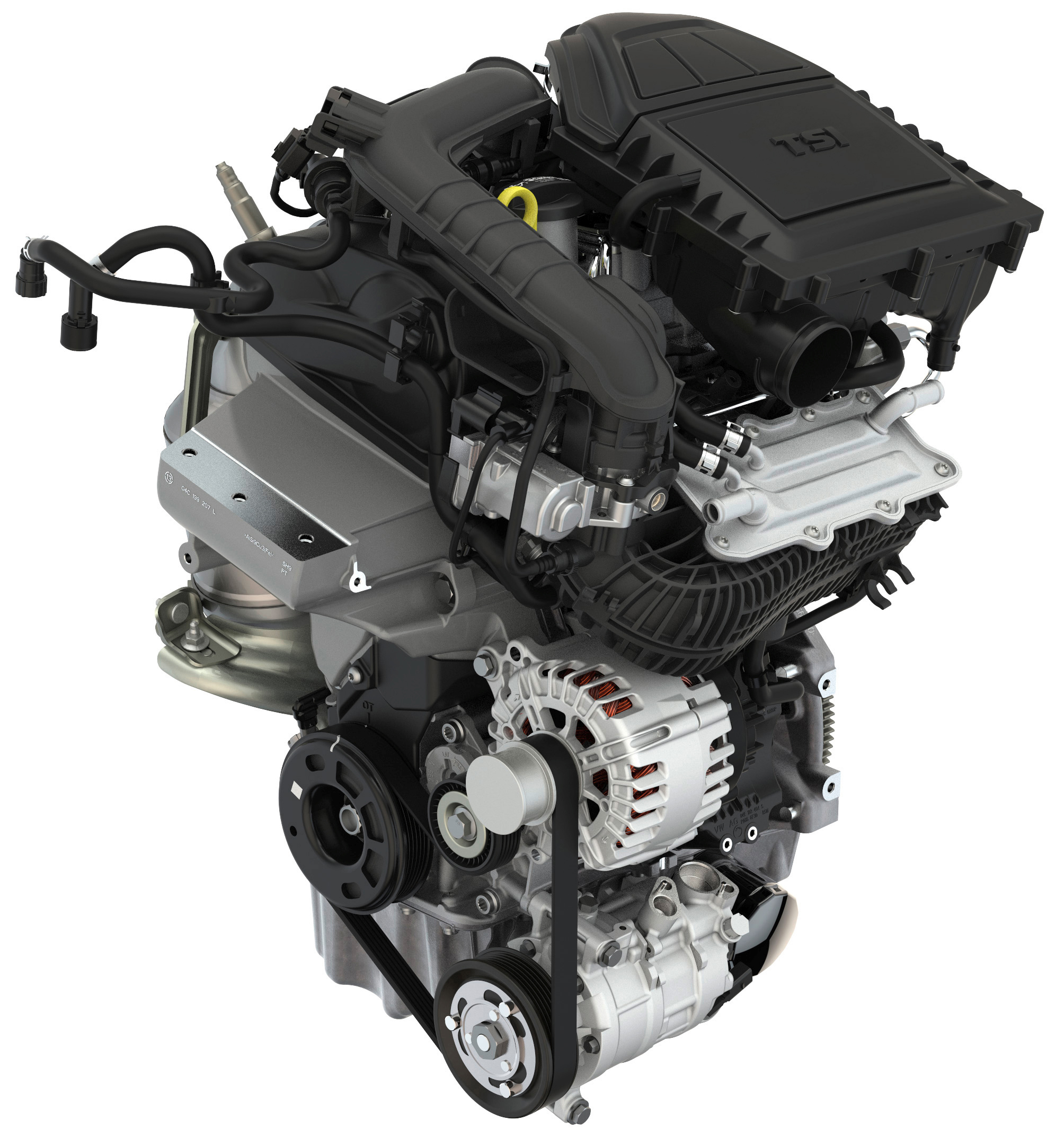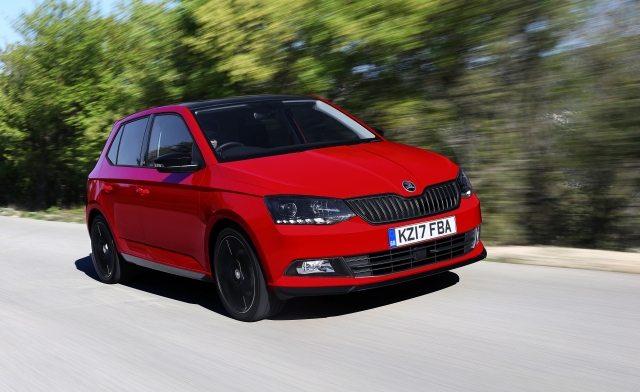In the ŠKODA FABIA and ŠKODA FABIA ESTATE, a 1.0l TSI engine with three cylinders and four valves is replacing the 1.2-liter engine with four cylinders that has been used to date. The new engine offers more power. The power output of the ŠKODA FABIA 1.0l TSI is 94 hp, while the output of the more powerful version is at 108 hp but offers an improved torque figure of 200 Nm (previously 175 Nm). Downsizing offers another advantage: the engine’s fuel consumption has been reduced by up to six per cent. One reason for this is the three-cylinder engine concept with a reduced weight of the free inertial forces and a more efficient oil pump. The revised ŠKODA FABIA and ŠKODA FABIA ESTATE will be introduced to the public for the first time at the Geneva International Motor Show (7-19 March 2017).
Injection pressure reduces fuel consumption by up to 6 percent
Downsizing, lightweight construction, more turbo power – the ŠKODA FABIA and ŠKODA FABIA ESTATE feature the Czech car manufacturer’s latest developments under their bonnets. Thanks to an increase in injection pressure to 250 bar, both power variants of the new 1.0-liter engine offer better driving performance than the 1.2-liter engines that have been used up to now and they also achieve a reduction in fuel consumption of up to 6 per cent.
Three-cylinder engine with smooth running and sporty sound
Besides its smooth running, the ŠKODA FABIA’s new 1.0l TSI three-cylinder engine also features sporty and dynamic sound. With its compact construction and due to its lightweight aluminum crankcase, the engine weighs ten kilograms less than the 1.2-liter engine that has been used to date. The aluminum pistons and the connecting rods are well balanced and the engine runs in a smooth manner with little frictions. A balancing shaft is unnecessary. This saves on weight and helps to reduce fuel consumption and CO2 emissions.
The oil pump, which has a freely controllable flow rate, also helps with this. It continuously adjusts the pressure required to suit the engine load. The boost pressure, which reaches up to 1.6 bar, increases quickly due to the turbocharger’s intercooler being integrated into the induction tract. The engine feels responsive and dynamic because the frequency of the exhaust pulses generally build quicker than with the four-cylinder, for example. This occurs also at low rpm, providing a performance advantage in city traffic.
The 1.0l TSI 94 hp engine performances
The power output of the ŠKODA FABIA 1.0l TSI with manual five-speed transmission is 94 hp. Torque remains unchanged at 160 Nm, yet the driving performance has been improved. Compared to the 1.2 liter engine with four cylinders used to date, the top speed has increased by 3.2 km/h (2 mph) to 185 km/h (115 mph) and the acceleration from 0 to 100 km/h (62 mph) has improved by 0.3 seconds to 10.6 seconds (ŠKODA FABIA ESTATE: from 11.0 to 10.8 seconds). The engine’s tractability from 60 to 100 km/h (37 to 62 mph) and from 80 to 120 km/h (50 to 75 mph) is identical to its predecessor. The fuel consumption and emissions of the hatchback and Estate, on the other hand, have improved considerably from 4.6 l/100km – 61.4 mpg – 105 g CO2/km to 4.3 l/100km – 65.7 mpg – 99 g CO2/km.
The 1.0l TSI with 108 hp: power output unchanged, more torque
Just like its 1.2-liter predecessor, the more powerful 1.0-liter engine with manual six-speed transmission delivers 108 hp; however, its torque has increased from 175 to 200 Nm. Acceleration from 0 to 100 km/h is achieved in 9.5 seconds (ŠKODA FABIA ESTATE 9.6 seconds); the top speed is 196 km/h (122 mph). The increase in torque is most noticeable when accelerating on country roads or motorways. The improved tractability of the engine is most evident when it is combined with the optional 7-speed DSG transmission. In the highest gear, the short acceleration from 60 to 100 km/h can now be accomplished up to 2.6 seconds faster (ŠKODA FABIA hatchback 2.4 seconds), while acceleration from 80 to 120 km/h is as much as 4.1 seconds faster (ŠKODA FABIA hatchback 3.9 seconds). In the manual versions of the hatchback and Estate, the fuel consumption and emissions of the three-cylinder with 108 hp are now 4.4 l/100km – 64.2 mpg – 101 g CO2/km. For the DSG-transmission versions, fuel consumption has improved in both variants to 4.5 l/100km – 62.8 mpg – 104 g CO2/km.
Source: Škoda





















excuse me.
pressure 250 bar or 25 bar?
with fuel, this pressure too high. It’s wonder, awesome
250 bar! It is because it is a direct injection gasoline engine 🙂
wow.
have u technology of Skoda engine? I interest in about them.
Thank. (y)
The technology is the same on Volkswagen vehicles, you can find many technical information on the internet I think 🙂
Hi. I have an 2016 audi a3 1.0 tfsi 3-cylinder engine. I wonder about turbo lubricating system on my car. Does have an engine independent assist system lubricating turbocharher?
WOW, being an auto enthusiast, i am wonder to hear that the injection pressure has been increased to 250 bars? Please be noted that the such kind of increase will also increase the fuel consumption as the amount of liquid being injected per minute will be triggered not suppressed. More pressure means more fuel per hour/minute. I need a thorough clarification for this. Moreover, the 1.0 litre engine cannot produce same kind of torque that was available in 1.2 litre without turbo or supercharger. This thing also needs to be justified technically. Thanks